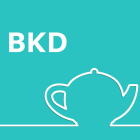
After a short silence, the lady first spoke. She wished him to know that she had been assured of his absence before she came to the place, and accordingly began by observing, that his arrival had been very unexpected – “for your housekeeper,” she added, “informed us that you would certainly not be here till to-morrow; and indeed, before we left Bakewell, we understood that you were not immediately expected in the country.”
pride and prejudice, by jane austen
We might have finished reading Pride and Prejudice in book club (spoiler alert – we all loved it) but I’m a tad late in posting my final P&P-inspired bake. And for this bake, we’re off to Bakewell and Derbyshire – where Elizabeth first began to see past her pride and prejudice to view Darcy differently.
“My dearest sister, now be serious. I want to talk very seriously. Let me know every thing that I am to know without delay. Will you tell me how long you have loved him?”
“It has been coming on so gradually, that I hardly know when it began. But I believe I must date it from my first seeing his beautiful grounds at Pemberley.”
pride and prejudice, by jane austen
With historical references dating back to the 1600s, and a staple in Derbyshire and neighbouring Staffordshire, one thing that Elizabeth may have eaten before leaving the inn that morning would have been an oatcake.
The oatcake she would have eaten would have been very different to the Scottish oatcake – which is more like a biscuit and similar to a ship’s biscuit that Captain Frederick Wentworth (from Persuasion) would have eaten when he was at sea. The Derbyshire Oatcake is, instead, soft, round and pliable and a cross between a pancake and a yeasted pikelet or crumpet.
Made essentially from oatmeal, flour (although early recipes would have just contained oatmeal), water (or milk) and yeast, and allowed to ferment – a 17th-century sourdough – the origins of the oatcake and whether it came from Derbyshire or Staffordshire is a tad like arguing over whether Australia or New Zealand was the first to make a pavlova. Just as with that debate it’s easier to sit on the fence and say they were probably being made at about the same time, although they do appear to have been commercialised first in Staffordshire with housewives from that county making batches to sell in the potteries or from the windows of terraced houses to miners and other workers.
In the same vein, there are slight differences between the two versions – the Derbyshire oatcake being larger, thicker and containing milk – but again, I’m not going there.
As to how you eat them? I suspect Elizabeth Bennet may have had it with butter and treacle or preserves, but she might also have eaten with cheese, bacon or other savoury fillings.
The recipe I’ve chosen is Paul Hollywood’s from his book British Baking. The recipe makes 8, but they freeze really well – which is fortunate as I needed to try different fillings. One I ate with butter and golden syrup, another I grated cheese over as I warmed it up in the pan, and then I took that a step further with vegemite and cheese. Others I filled with scrambled eggs and bacon (with brown sauce), but all were rolled up like a wrap. Somehow, I can’t see Elizabeth Bennet doing that.
Ingredients
- 400ml milk
- 100g plain flour
- 100g fine oatmeal (I used porridge oats which I blitzed first)
- ½ tsp salt
- 1 tsp instant yeast
- 15g unsalted butter, melted
- Butter or sunflower oil for frying
- You’ll also need a 20cm frying pan
Method
Heat the milk to lukewarm. In a large bowl mix together the flour, oatmeal and salt, then add the yeast and stir through. Gradually add the warm milk, stirring the whole time, and beat hard (a wooden spoon is the best tool for the job) to form a batter. Put aside, cover, and leave it be for about 1 ½ hours until the mixture begins to bubble.
Add the melted butter to the mix and use a stick blender to incorporate it and ensure there are no lumps in the batter. You should have a thick, pouring consistency, but if you don’t, add a splash of water.
Heat your frypan over medium heat, add a little butter or oil and swirl it about.
Pour in half a ladleful of batter, tilting the pan so it covers the entire surface. Cook for a couple of minutes until bubbles appear on the surface, carefully turn over and cook for another minute or until lightly coloured.
Remove to a warm plate until the rest are ready and fill as you like.
The pic below is from British Baking – mine didn’t look anywhere near as pretty, but they tasted great.


Look delicious!
LikeLike